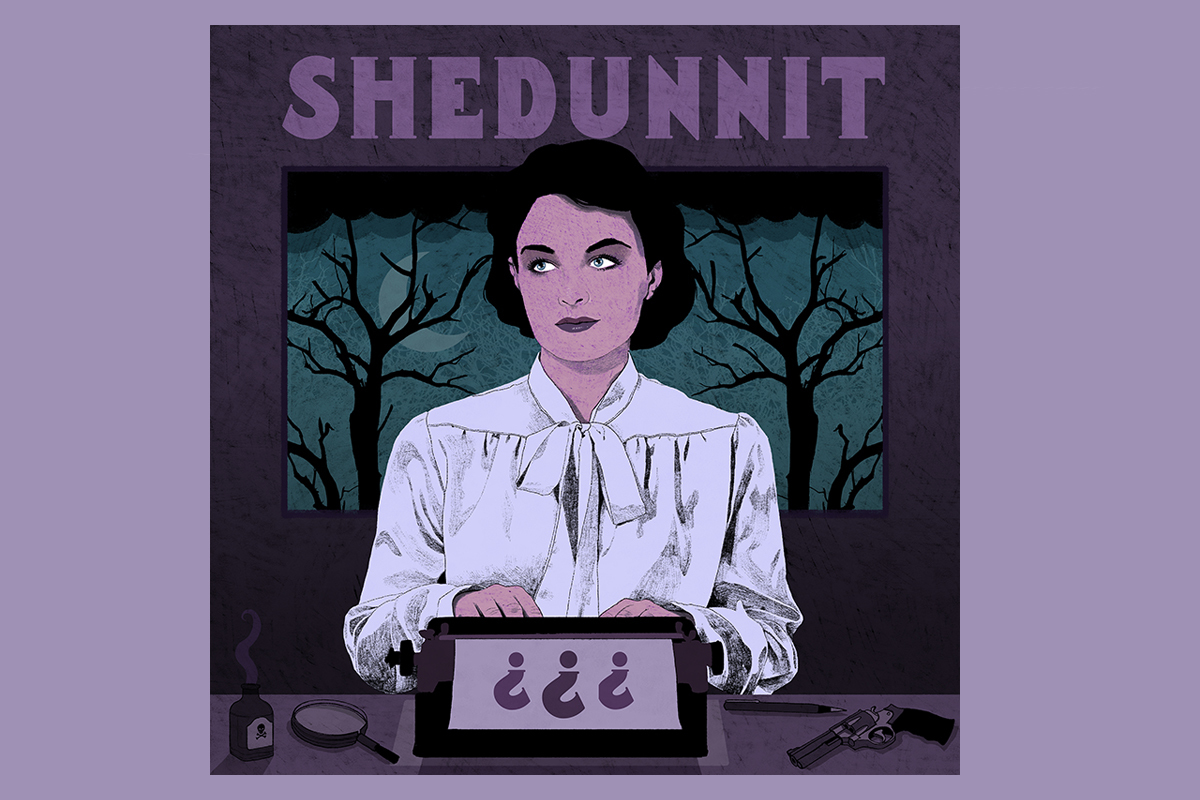Features
Playing by the Rules: Christie's Unconventional Crimes

This piece was written by Shedunnit creator Caroline Crampton
Spoiler alert: this feature reveals major details about the outcomes of The Murder of Roger Ackroyd, Murder on the Orient Express and Three Act Tragedy. The feature also contains spoilers for Death in the Clouds and Death on the Nile.
There’s a persistent myth that surrounds Agatha Christie’s shocking, genre-bending 1926 novel, The Murder of Roger Ackroyd. It suggests that readers and critics alike felt cheated by the book’s magnificent central twist. There are suggestions that there was a backlash against Christie when the book was first published, with people angry with her for so comprehensively pulling the rug out from under them.
In fact, critics have always been very complimentary about the novel’s plot, form and structure. Not only that, but many have singled out its deductive steps for special commendation. The New York Times Book Review, for instance, felt that the novel “cannot be too highly praised” and there were few other detective novels that provided “greater analytical stimulation”. Christie was “not only an expert technician and a remarkably good storyteller” but had also deftly provided just enough hints of murderer’s identity for the reader to work out the solution. The Observer, meanwhile, was very complimentary about the book’s “coherence” and “reasonableness”. If there was dissatisfaction expressed, it was generally from reviewers disgruntled that they hadn’t guessed the murderer’s identity themselves — but very few put the blame for that at Christie’s door.
So why, then, is there this myth that with The Murder of Roger Ackroyd, Christie had somehow “cheated” at creating a detective story? To understand, we need to delve back into the crime writing conventions of detective fiction’s golden age in the 1920s and 30s, when crosswords, treasure hunts and puzzles were all the rage. The idea of “fair play” was everywhere in these games. It was considered frightfully unfair for those who created them to conceal clues or withhold essential information. The same spirit existed among fans of detective fiction too. For some readers, there was a strong feeling that authors should give them a sporting chance to work out whodunnit by sharing the detective’s findings as they went along, rather than introducing surprise suspects and clues in the final chapter.
This idea was so popular and prevalent that the writers themselves took it up. In 1928, two detective novelists on either side of the Atlantic — S.S. Van Dine (the pseudonym of the American art critic Willard Huntington Wright) and Ronald Knox — each published essays which set out “rules” for detective fiction.
Knox’s “Decalogue”, as it came to be known, contains ten commandments for the whodunnit author, most of which are designed to ensure fairness to the reader. They include a ban on twins, multiple secret rooms or passages, supernatural interventions and undiscovered poisons, as well as the injunction that the criminal must be someone who is working alone and who the reader knows about from early on the story, and neither the “Watson” narrator figure nor the detective must conceal clues or events from the reader.
Van Dine had many similar preferences, but he was also much more specific in his “rules”. No romance, no secret societies, no murderers who are also domestic servants, no long atmospheric passages of writing, no professional criminals, no fake seances, no code letters, no knockout drops or hypodermic syringes, no cigarette butts as evidence. . . The list goes on and on and on.
Other writers like T.S. Eliot and A. A. Milne also published essays detailing their preferences for how detective stories should be constructed (Milne even wrote one of his own, The Red House Mystery, that perfectly matched his beliefs about how a whodunnit should be plotted). There’s definitely a lot of personal preference involved and a fair bit of tongue-in-cheek joking, but there are common threads that run through all of these different manifestations of “the rules” for detective fiction. Romance, the supernatural, and lazy stereotypes are to be avoided. Unnecessarily mechanical murder devices are frowned upon. But above all, fair play to the reader is a must.
Agatha Christie was certainly aware of these rules — she was a member of the Detection Club, after all, which had “it is a demerit in a detective novel if the author does not ‘play fair by the reader’” as one of its founding tenets. But like plenty of other authors of her time, she experimented around the edge of them, bending and sometimes breaking them as she saw fit.

It’s a point of debate as to whether The Murder of Roger Ackroyd actually breaks the rules or not. Some certainly feel that by having the narrator himself, Poirot’s “Watson” Dr Sheppard, commit the crime, Christie was definitely colouring outside the lines. Sheppard tells the whole story in the first person, ostensibly writing an account of the case for Poirot’s use, and of course he doesn’t include the details of his own criminal actions. But others argue that Christie did play fair with the reader in this regard, because Sheppard doesn’t actually lie to the reader, he just leaves gaps.
We see this very early on, when Sheppard says: “The letter had been brought in at twenty minutes to nine. It was just on ten minutes to nine when I left him, the letter still unread.” The whole solution to the mystery is contained in that ten-minute gap when the murder was committed, which Christie dangles in front of the reader right from the start of the story. If one were to begin to suspect Sheppard at the point when he elides his actions here, we would read the rest of the novel very differently.
Except, of course, we don’t — Christie is far too good at misdirection. She might leave a big clue out in the open, but she skilfully points our attention elsewhere. This happens in After the Funeral as well, when Cora announces at her brother’s funeral that he has been murdered, and afterwards we hear her thoughts as she has tea and gloats over the commotion she has caused. Except, if you read that section carefully, Christie never actually says that it is Cora who is having these thoughts, we just assume that from the context as we turn the pages, eager to find out what happens next. Since the whole story turns on a matter of impersonation, this is meant to flag to the reader that Cora might not actually be Cora, you see.
Murder on the Orient Express is another story that plays with the formal restrictions of these rules. Van Dine was very clear that “there must be but one culprit, no matter how many murders are committed”. Yet onboard that train hurtling across Europe, Christie places a whole group of murderers, collectively taking revenge on a horrible criminal. The multiple culprit device also creates plenty of red herrings and contradictory clues, which can get the reader in an awful muddle. It’s a dramatic and extremely popular story (as the numerous film, TV and stage adaptations show) but perhaps not strictly a “fair play” story.
Christie also disregards the romance rule in plenty of her stories, perhaps most blatantly in Three Act Tragedy, with the culprit killing in order to cover up his existing marriage so that he can marry a new young wife. We see this also in Death in the Clouds, when an audacious and dramatic murder is carried out under Poirot’s nose in the cabin of an aeroplane, partly in order that the murderer can inherit a great fortune and partly so they can court an attractive fellow passenger unencumbered. And Death on the Nile breaks both the multiple murderer rule and the romance one, as it happens — the whole story is centred on an intoxicating love triangle that leads to disaster.
Five Little Pigs is one of my own favourite of Christie’s novels. It’s essentially a cold case investigation, in which Poirot looks back at a murder from sixteen years ago, and solves it using only the psychological indications in each suspect’s testimony. It’s very far from being a fair play story, since there no real clues at all for the reader to pick up on, and Poirot’s solution comes only from his interpretation of a subjective account of the events.
Yet, here as with every other story where Christie disregarded the rules, it doesn’t matter at all. The story is still thrilling, gripping and clever — perhaps more so because there are no fingerprints or cigarette ash clumps to be discovered. I don’t think it’s an accident that some of her most popular and enduring novels are the ones that most flagrantly flout the rules. People return to stories like Murder on the Orient Express and The Murder of Roger Ackroyd precisely because they subvert the norms of classic detective fiction. Christie found a sweet spot between the familiarity of the conventions and the absurdity of wild experimentation. In her books, there’s just the right amount of rebellion.
This piece was written by Caroline Crampton. Caroline is a writer and podcaster. She hosts Shedunnit, a podcast about classic crime fiction. Find out more and listen at shedunnitshow.com.



 UK
UK 